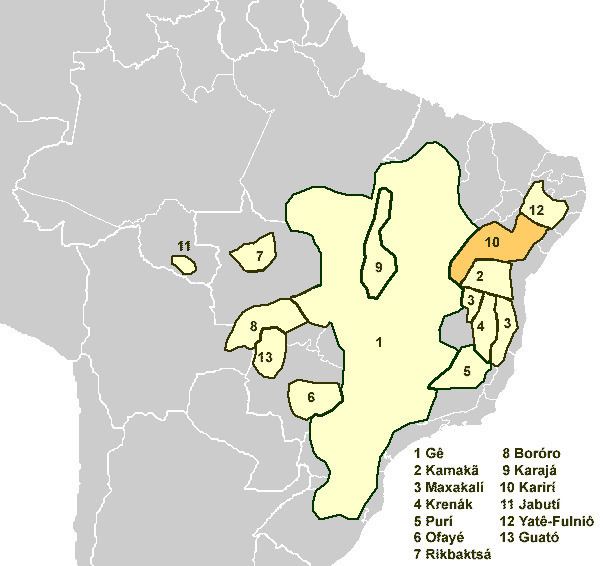Extinct ca. 1970 ISO 639-3 kzw | Ethnicity Kiriri people Language family Macro-GêKarirí | |
 | ||
The Karirí languages, generally considered dialects of a single language, are extinct languages formerly spoken by the Kiriri people of Brazil. It was spoken until the middle of the 20th century; the 4,000 ethnic Kiriri are now monolingual Portuguese speakers, though a few know common phrases and names of medicinal plants.
The four known Kariri languages are:
There are short grammatical descriptions of Kipeá and Dzubukuá, and word lists for Kamurú and Sabujá. Ribeiro established through morphological analysis that Kariri is likely to be related to the Jê languages.
Other languages called 'Kariri'
The names Kariri and Kiriri were applied to many peoples over a wide area in the east of Brazil, in the lower and middle São Francisco River area and further north. Most of their now-extinct languages are too poorly known to classify, but what is recorded does not suggest that they were all members of the Kariri family. Examples are:
